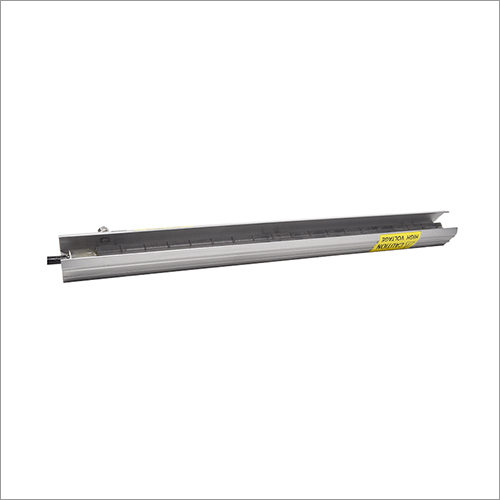Discharge Electrode
Product Details:
- Color Silver
- Usage Industrial
- Material MS
- Click to View more
Discharge Electrode Price
- 1250 INR/Piece
- 1 Piece
Discharge Electrode Specification
- Silver
- Industrial
- MS
Discharge Electrode Trade Information
- 5 Piece Per Day
- 1-7 Days
Product Description
A discharge electrode, with regards to electrostatic precipitators and certain modern cycles, is a part used to create and keep an electrical charge in a gas or air stream. These electrodes are intended to make a high-voltage electric field inside a chamber or pipe to draw in and gather particulate matter like residue, smoke, or different contaminations from the gas stream.
Application of Discharge Electrode:
- Pouch Packaging & Tubing M/cs
- Coating & Laminating M/cs
- Plastic bag making M/cs
- Sheeting, Sleeting & rewind M/cs
- Form Fill Seal M/cs
- Wrapping, Stenter M/cs
- Paper Production , Blow Film m/cs
- Blow Film, Cast film & Extrusion M/cs
FAQs of Discharge Electrode:
Q1: What is the motivation behind a discharge electrode in an electrostatic precipitator?
A1: The discharge electrode is utilized to produce a high-voltage electric field inside the precipitator chamber. This field ionizes air or gas particles, making particles and electrons that are utilized to charge particulate matter in the gas stream, making it more straightforward to gather on the gathering electrodes.
Q2: How does a discharge electrode work?
A2: A discharge electrode is normally kept up with at a high certain voltage comparative with the gathering electrodes. This voltage creates major areas of strength for a field nearby the discharge electrode, making air or gas particles ionize. The subsequent particles and electrons are then used to charge particles in the gas stream, working with their assortment on the grounded gathering electrodes.
Q3: What materials are discharge electrodes normally made of?
A3: Discharge electrodes are frequently made of materials that can lead power, like metal wires or bars. Normal materials incorporate treated steel, aluminum, or copper.
Q4: Are discharge electrodes utilized exclusively in electrostatic precipitators?
A4: While discharge electrodes are usually connected with electrostatic precipitators for particulate matter control, they can likewise be utilized in different applications where the age of particles or electron streams is required, like in specific kinds of air purifiers and ozone generators.
Q5: What support is expected for discharge electrodes in an electrostatic precipitator?
A5: Upkeep commonly includes cleaning and investigating the discharge electrodes to guarantee they are liberated from residue or flotsam and jetsam development, which can lessen their viability. Normal checks of the electrode arrangement and electrical associations are additionally fundamental to guarantee legitimate activity.
Q6: Can discharge electrodes wear out over the long haul?
A6: Indeed, after some time, discharge electrodes can encounter wear because of the great voltage conditions and openness to ionized gases. They might should be supplanted assuming they become harmed or on the other hand on the off chance that their presentation debases altogether.
Q7: How does the voltage on discharge electrodes influence their presentation?
A7: The voltage applied to discharge electrodes assumes an essential part in their presentation. Higher voltages can produce a more grounded electric field, prompting more compelling ionization of gas atoms and charging of particles. Be that as it may, the voltage level should be painstakingly controlled to forestall igniting or other electrical issues.


 English
English Spanish
Spanish French
French German
German Italian
Italian Chinese (Simplified)
Chinese (Simplified) Japanese
Japanese Korean
Korean Arabic
Arabic Portuguese
Portuguese






 Send Inquiry
Send Inquiry